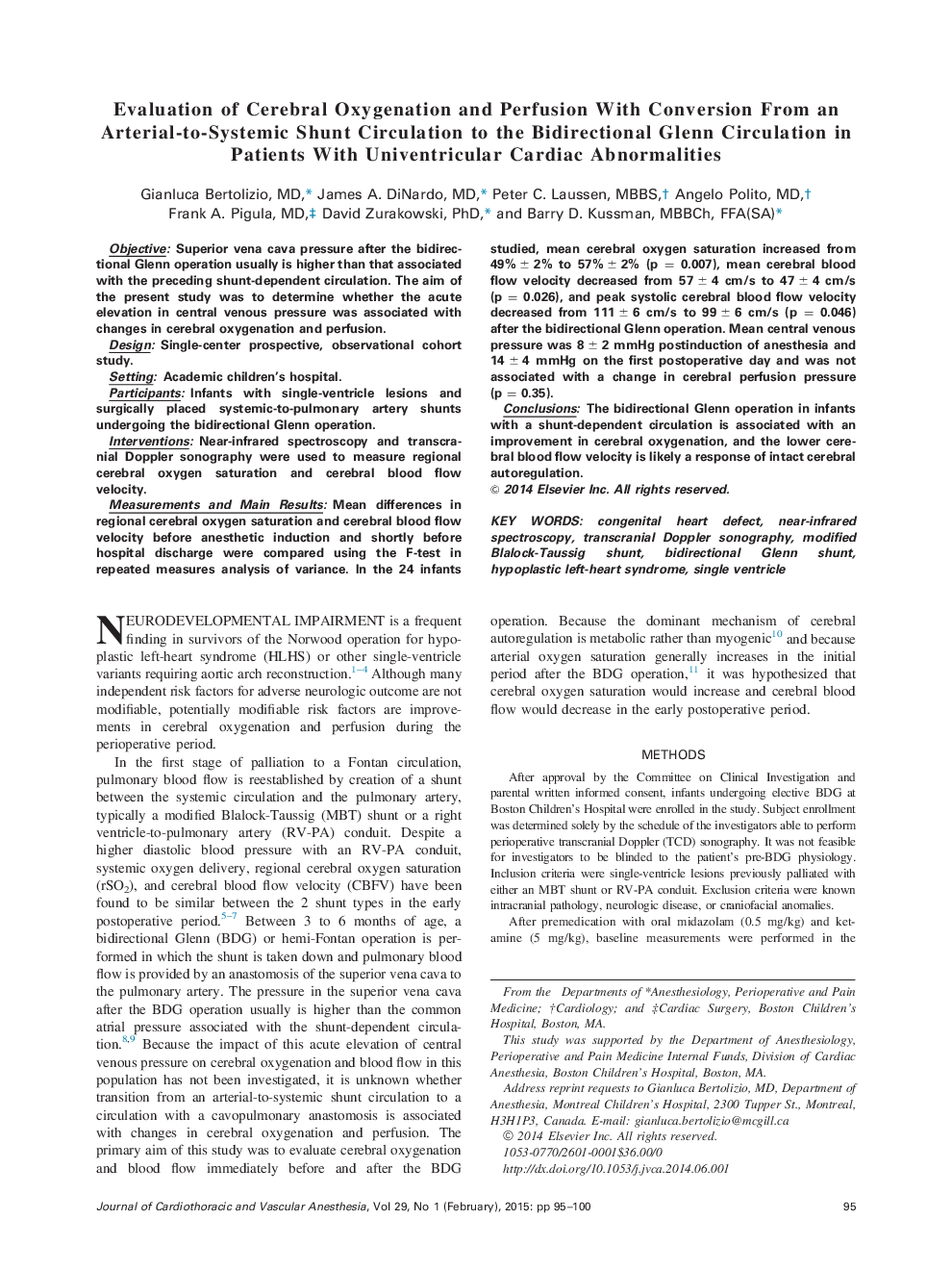| Article ID | Journal | Published Year | Pages | File Type |
|---|---|---|---|---|
| 2758933 | Journal of Cardiothoracic and Vascular Anesthesia | 2015 | 6 Pages |
ObjectiveSuperior vena cava pressure after the bidirectional Glenn operation usually is higher than that associated with the preceding shunt-dependent circulation. The aim of the present study was to determine whether the acute elevation in central venous pressure was associated with changes in cerebral oxygenation and perfusion.DesignSingle-center prospective, observational cohort study.SettingAcademic children’s hospital.ParticipantsInfants with single-ventricle lesions and surgically placed systemic-to-pulmonary artery shunts undergoing the bidirectional Glenn operation.InterventionsNear-infrared spectroscopy and transcranial Doppler sonography were used to measure regional cerebral oxygen saturation and cerebral blood flow velocity.Measurements and Main ResultsMean differences in regional cerebral oxygen saturation and cerebral blood flow velocity before anesthetic induction and shortly before hospital discharge were compared using the F-test in repeated measures analysis of variance. In the 24 infants studied, mean cerebral oxygen saturation increased from 49%±2% to 57%±2% (p = 0.007), mean cerebral blood flow velocity decreased from 57±4 cm/s to 47±4 cm/s (p = 0.026), and peak systolic cerebral blood flow velocity decreased from 111±6 cm/s to 99±6 cm/s (p = 0.046) after the bidirectional Glenn operation. Mean central venous pressure was 8±2 mmHg postinduction of anesthesia and 14±4 mmHg on the first postoperative day and was not associated with a change in cerebral perfusion pressure (p = 0.35).ConclusionsThe bidirectional Glenn operation in infants with a shunt-dependent circulation is associated with an improvement in cerebral oxygenation, and the lower cerebral blood flow velocity is likely a response of intact cerebral autoregulation.
